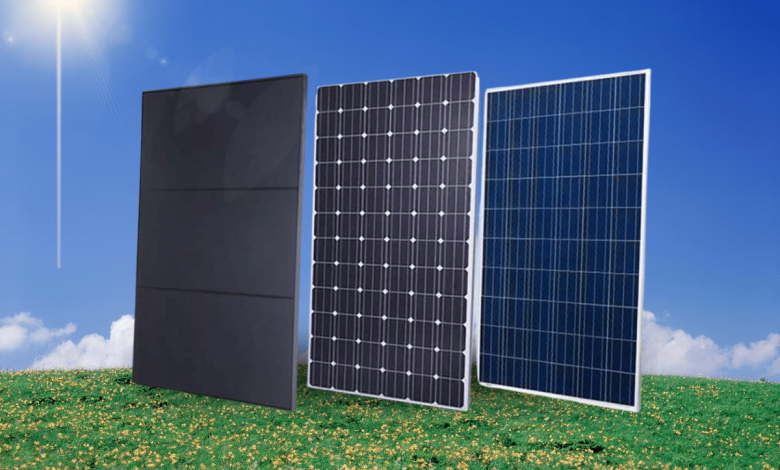Exploring Different Types of Solar Panels: Which One is Right for You?

As solar energy keeps picking pace in Australia, “solar panel installation in Melbourne” is becoming ever more in demand. However, with so many available, it gets confusing at times about which kind to use, according to what requirements you need to satisfy. This article discusses a few of the types, features, and benefits associated with different solar panels and help you make the most informed decision of which to install, for instance, your “13.3 kW solar system.”
Types of Solar Panels
Monocrystalline Solar Panels
Monocrystalline panels are one of the most efficient, but they are also stylishly designed. These are created from a single-crystal structure, which is made to convert more sunlight into energy. Therefore, this is ideal for the small roof space. Typically, they have a high wattage output, over 300 watts per panel, so it is easy to install a “13.3 kW solar system” in a smaller area.
Pros:
- High efficiency and power output.
- Space saving in view of higher wattage.
- Long-lasting usually provided with 25 years warranties.
Cons:
- Higher upfront compared to others.
- Degradation in efficiency when in hot temperatures
Polycrystalline Solar Panels
Polycrystalline panels are composed of many crystal fragments that have melted into one piece. While these do not quite offer efficiency as with monocrystalline panels, it is these panels that cost mostly cheaper than the former type, so it does easily catch the minds of many budget-conscious buyers. Wattage is less that would normally average 250 to 300 watts per panel.
Pros:
- Less expensive than monocrystalline panels
- Even in heat, there would be little energy loss.
Cons:
- Occupies much space for the same production of power.
- Less efficient than the monocrystalline types.
Thin-Film Solar Panels
Thin-film solar panels are fabricated by depositing photovoltaic material on a substrate, and it is light and flexible. They can be used in BIPV, and portable solar devices. The efficiency rates are low but perform better in low-light conditions and high temperatures.
Pros:
- Lightweight and flexible and can be applied in several applications.
- Better performance in low light.
- Manufacturing costs are relatively lower.
Cons:
- Lower efficiency, more space for the same amount of power.
- Lower life expectancy than crystalline panels.
Bifacial Solar Panels
Bifacial panels make use of light coming from both sides, increasing the energy produced. It can be monocrystalline or polycrystalline and set up with an open back where both sides are open to the sunlight. The use of bifacial solar panels is increasingly becoming common in commercial and residential uses.
Pros:
- More energy output on both sides.
- Could be more efficient in reflective conditions.
Cons:
- Generally is expensive because of high technology.
- Requires some mounting setups to get full output.
Choosing the Right Solar Panel for Your Needs
The following are points to consider in trying to find out what type of solar panel will best serve you:
-
Space: If you have less space on the roof, then you would need monocrystalline panels as they are efficient. However, if there is no constraint about space, then polycrystalline panels would be the economical one.
-
Budget: According to your budget for “solar panel installation in Melbourne”, you will spend more on monocrystalline panels since the initial investment is high; however, the long-term efficiency achieved may pay off. For polycrystalline panels, the initial investment is low.
-
Energy Needs: Calculate the energy that you require. The meaning of “13.3 kW solar system” is that you can combine any of the panel types such that the consumption will match the amount.
-
Aesthetics Preference: Aesthetics relating to the appearance of the panel. Monocrystalline panels seem to give a very modern and sleek impression. The polycrystalline panels look like an older, more traditional version. Thin film panels are applied in architectural integration so as to offer different aesthetic options.
- Warranty and Lifespan: Panels with more solid guarantees should have warranties of around 10 to 25 years. Monocrystalline panels have better warranty offers based on durability and performance.
Conclusion
Sun rays are a big means towards achieving sustainability and not continuing with such finite energy supply sources. Today, there are different kinds of solar panels. Exploring them can help you choose the best one for you. Monocrystalline or polycrystalline, thin-film, or bifacial kind? Choose it based upon your personal space, your budget, the amount you consume, and its visual appeal.
In Melbourne, if someone is interested in a solar panel installation then it is possible to seek advice from reputable installers, which will guide that person through the best available options to meet his or her individual needs. Choosing top-rated solar panels will help meet your energy goals. It will ensure that switching to renewable energy reduces your carbon footprint and saves on your electricity bill for years.





